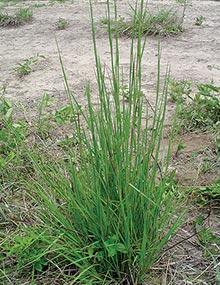

Quail-Friendly Plants of the Midwest, Page 31
Reviewed
Little bluestem is a native grass that occurs in clumps with fine leaves less than 1/4 inch wide. Seed stalks are commonly 2 to 3 feet tall. Stems are hairy and flattened near the base. Seeds are light and fluffy.

Quail-Friendly Plants of the Midwest, Page 34
Reviewed
Orchard grass is a cool-season bunch grass. Its leaves have a bluish cast. Close inspection of the leaf collar reveals a flattened shape and membranous ligule. Its rather distinctive seed heads form by late May. Height at maturity averages 3 feet.
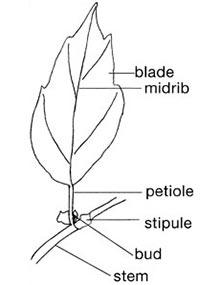
Quail-Friendly Plants of the Midwest, Page 02
Reviewed
Refer to this glossary for definitions of words and phrases related to plants.
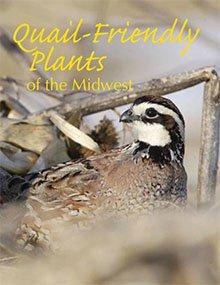
Quail-Friendly Plants of the Midwest
Reviewed
Learn how to identify plants important to bobwhites in the Midwest so that you can critically evaluate the food and cover components of habitat on your land.
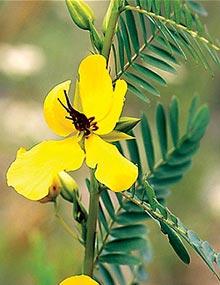
Quail-Friendly Plants of the Midwest, Page 37
Reviewed
Partridge pea grows from 12 to 18 inches up to 3 feet tall. It has compound, alternate leaves. Leaflets are less than 1 inch long. Flowers are bright yellow with reddish-purple bases, about 1 inch across. Ripened seedpods are red-brown.
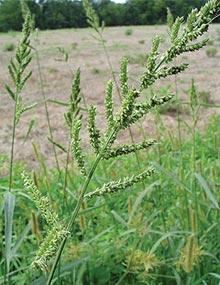
Quail-Friendly Plants of the Midwest, Page 05
Reviewed
Barnyardgrass is most often found growing in moist areas. The large seeds of this grass make it an important food source for bobwhites.
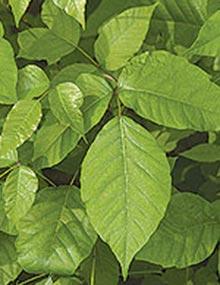
Quail-Friendly Plants of the Midwest, Page 40
Reviewed
Poison ivy is a vine that can grow up to 60 feet high or a low, upright shrub. It has alternate leaves with three oval to lance-shaped leaflets with a pointed tip.The flowers are greenish white and grow in clusters 1 to 4 inches long on new growth of stems.
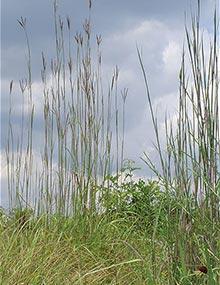
Quail-Friendly Plants of the Midwest, Page 08
Reviewed
Mature seed stalks of big bluestem are copper colored and often grow more than 5 feet tall. The clumpy growth of big bluestem allows room for other plants to exist and provides excellent habitat structure for nesting and roosting

Quail-Friendly Plants of the Midwest, Page 43
Reviewed
Common ragweed commonly grows to 18 inches. Leaves are simple, alternate, smooth and deeply lobed. Often the lobes are lobed again.
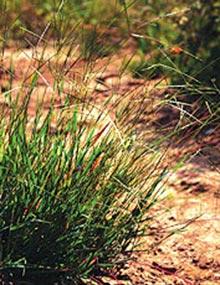
Quail-Friendly Plants of the Midwest, Page 11
Reviewed
Often found in disturbed areas, crab grass tends to indicate early successional vegetation, and thus good quail habitat. However, late spring disturbance may result in a crab grass response heavy enough to displace other beneficial or desired plants.
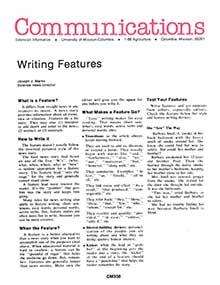
Writing Features
Reviewed
Learn how to craft engaging feature stories by focusing on imaginative leads, concise sentences, and active verbs to captivate your readers.

Techniques for Aging Live Deer
Reviewed
The ability to age live deer is a beneficial skill for all deer hunters and managers. Visit our site to learn Techniques for Aging Live Deer.
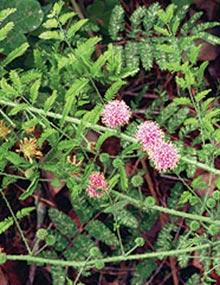
Quail-Friendly Plants of the Midwest, Page 46
Reviewed
Sensitive brier has prostrate stems and seedpods covered with hooked barbs. Doubly compound, featherlike leaves close rapidly when touched or disturbed. Flower clusters are a fuchsia ball dotted with contrasting yellow stamens.
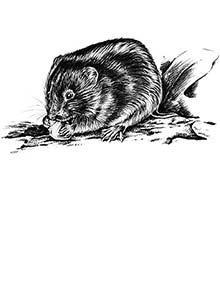
Controlling Voles in Horticulture Plantings and Orchards in Missouri - Page 2
Reviewed
Pine voles spend most of their lives under the ground in burrow systems. They can be found in forested areas but also inhabit fields next to woodlands. They feed on plant roots, flower bulbs, and the growing tissue (cambium) of tree roots.
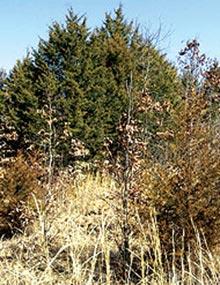
Quail-Friendly Plants of the Midwest, Page 14
Reviewed
Eastern red cedar is a small to medium-sized tree up to 50 feet tall. It is an aromatic evergreen with a dense pyramid-shaped to cylindrical crown.
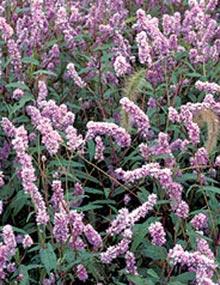
Quail-Friendly Plants of the Midwest, Page 49
Reviewed
Annual smartweeds has abundant, swollen nodes where the leaf meets the stem. Leaves are simple, alternate and parallel-veined; most are lanceolate. Flower clusters are white or pink, and at maturity the plant yields large numbers of seeds.
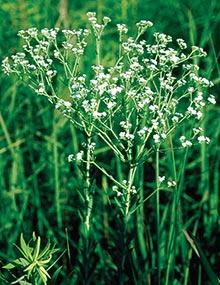
Quail-Friendly Plants of the Midwest, Page 17
Reviewed
Flowering spurge may reach 3 feet tall on richer soils. Inflorescences are multibranched, with multiple flower heads per branch. Flowers have five white petals with a yellow center and average about one-third inch across.
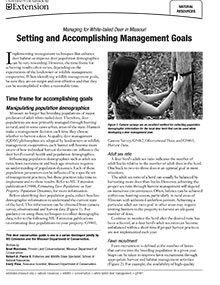
Managing for White-tailed Deer in Missouri: Setting and Accomplishing Management Goals
Reviewed
White-tailed deer management
This deer conservation guide is one in a series developed jointly by MU Extension and the Missouri Department of Conservation.
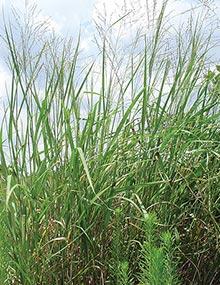
Quail-Friendly Plants of the Midwest, Page 52
Reviewed
Switch grass exhibits an upright, bunchy growth form. The leaves twist in a corkscrew-like pattern from the base to the tip of the blade.

Quail-Friendly Plants of the Midwest, Page 20
Reviewed
Goat’s rue, a member of the bean family, is readily identified by its striking flower, which consists of a cream-colored upper petal above two bright pink lower petals. Leaves are alternate, compound and usually hairy, with a pointed, hairlike tip.
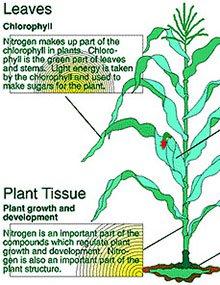
Nitrogen in the Plant
Reviewed
Nitrogen plays an important part in many essential functions. Visit our website to learn about Nitrogen in the Plant.
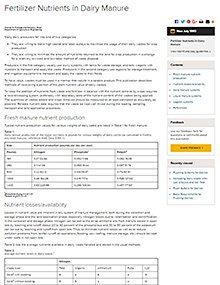
Fertilizer Nutrients in Dairy Manure
Reviewed
Discover effective strategies for managing dairy manure to optimize nutrient recovery and enhance crop productivity through proper manure handling.
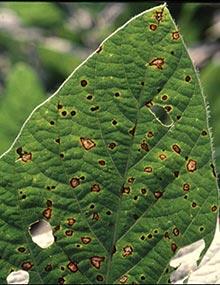
Soybean Rust, Page 4
Revised
Frogeye leaf spot causes small, circular lesions on soybean leaves. It thrives in warm, humid conditions and survives in infected residue and seed.
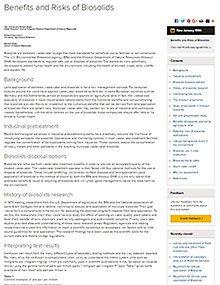
Benefits and Risks of Biosolids
Reviewed
Biosolids are domestic wastewater sludge that meet standards for beneficial use as fertilizer. Visit our site to learn the Benefits and Risks of Biosolids.
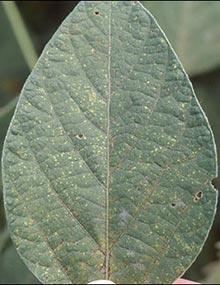
Soybean Rust, Page 7
Revised
These photos show the disease stages of soybean rust, which can be difficult to identify, especially in the early stages.